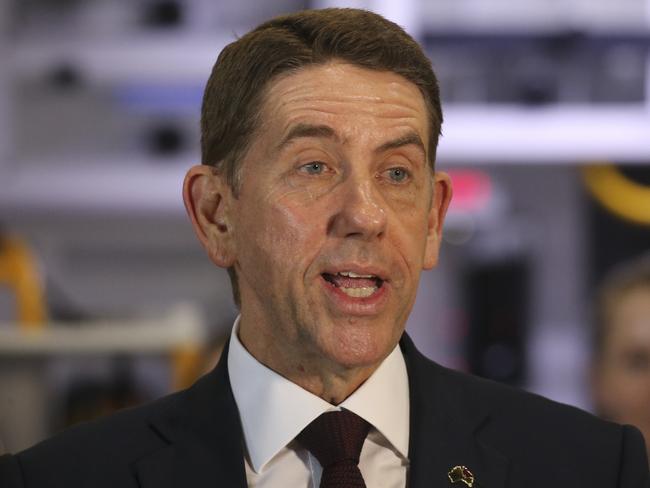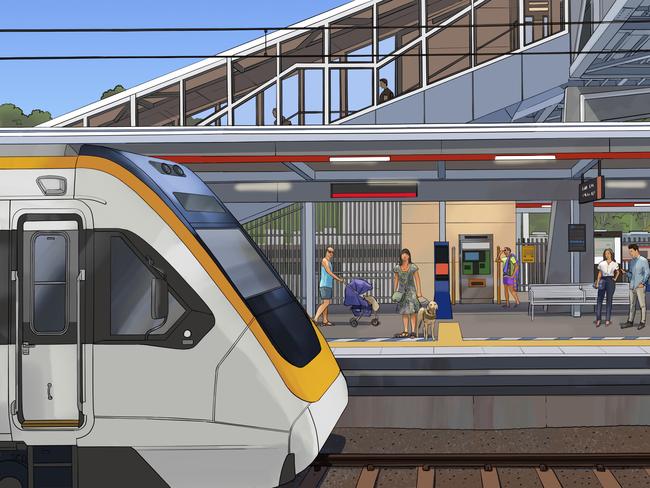Qld Big Build price tag now rivals NASA’s Project Apollo
The price tag of the state government’s centrepiece Big Build has ballooned to $107bn over the next four years — almost the same cost per minute as the Apollo Project that landed a man on the moon.
QLD Politics
Don't miss out on the headlines from QLD Politics. Followed categories will be added to My News.
The price tag of the Queensland Labor government’s centrepiece Big Build has ballooned to $107bn over the next four years – almost the same cost per minute as the Apollo Project that landed men on the moon.
Treasurer Cameron Dick will on Friday reveal the latest cost of the mega infrastructure pipeline for between July this year and mid-2028.
The new cost is up $18bn from the original $89bn four-year price tag when the Big Build program was unveiled in last year’s Budget.
The updated figure is the equivalent of $51,000 being spent every minute of every day over the next four years.
NASA’s Apollo Project to land a man on the moon, which ran from 1961 to 1972, cost $US257bn in today’s dollars – $US44,417 a minute, or $A66,800 based on current exchange rates.
For that, NASA launched 11 space flights and successfully landed 12 astronauts on the moon.
(Mr Dick recently declared Queensland’s investment in quantum computing the state’s Project Apollo.)
The state government’s Big Build, meanwhile, will construct projects including a rail line from Beerwah to Caloundra, a new youth detention centre in Woodford, a mental health unit in Rockhampton, and wind farms in Central Queensland and north of Dalby.
Premier Steven Miles said it was about delivering the hospitals, roads, rail, housing, schools, healthcare and energy infrastructure a growing state needed.

“Almost 70 per cent of this work is happening in regional areas representing the biggest investment in regional job creation in the states history, – supporting around 50,000 jobs outside of Greater Brisbane,” Mr Miles said.
“As the economy slows, this level of investment and job creation is critical to Queensland’s future success and economic prosperity.”
It is understood about $2.1bn of the increased cost covers blowouts on existing projects – with Mr Dick and Transport Minister Bart Mellish to detail the increases on Friday ahead of next Tuesday’s State Budget.
Mr Dick has already revealed the state government will spend billions more than it can earn in the upcoming financial year, with Queensland to notch a $3bn deficit.
This is on top of a debt bomb set to swell to a whopping $188bn in just for years.
The government is slated to borrow billions of dollars in order to deliver the “biggest cost of living package of any state”.
Spending on new infrastructure over the next four years includes $2.1bn for direct Sunshine Coast rail, $1.365bn for the government’s housing plan, $1.7bn for Olympic and Paralympic Games venues in 2027-28, $936m for the Borumba Pumped Hydro project and $109.6m for the new Paradise Dam wall.
There is also $627.61m to build the new Woodford Youth Detention Centre and $260.5m for the soon-to-be completed 76-bed Wacol Youth Remand Centre.
A total of $27bn out of $107bn will be spent in 2024-25, with the state government claiming it would directly support 72,000 jobs.

Preliminary treasury forecasts have revealed Queensland’s net debt will quintuple to $73bn between now and 2027-28 — five times higher than the $14.6bn it is set to be by mid-2024.
Total debt — which includes government-owned corporations — will rise to $188bn by 2027-28, up from $109.8bn in 2023-24.
“Our government made the tough decisions and right choices to make our budget the envy of the nation,” Mr Dick said.
“The Big Build is also powering the industries and jobs of the future and building the places and spaces that Queenslanders will enjoy for generations to come.”
Mr Mellish, expected to outline transport project cost escalations on Friday, reiterated his commitment to further enhancing transparency.
“In December, I committed to further enhancing transparency with the Queensland public, highlighting where the costs of certain projects had exceeded our forecasts and budgets as a result of challenging market conditions across the nation and internationally,” he said.
“It is critical that we keep managing these costs, and managing these projects, so that we can continue to deliver the infrastructure that we need across Queensland.”
The state government has already announced a $150m package over six months to reduce public transport fares to a flat rate of 50 cents no matter the distance travelled.
Queenslanders are also set to receive $1000 off their power bills from July, though the $2.5bn power bill relief package was accounted for in 2023-24 and won’t be reflected in the upcoming budget.
(Mr Dick recently likened Queensland’s investment in quantum computing technology to the state’s Project Apollo.)





